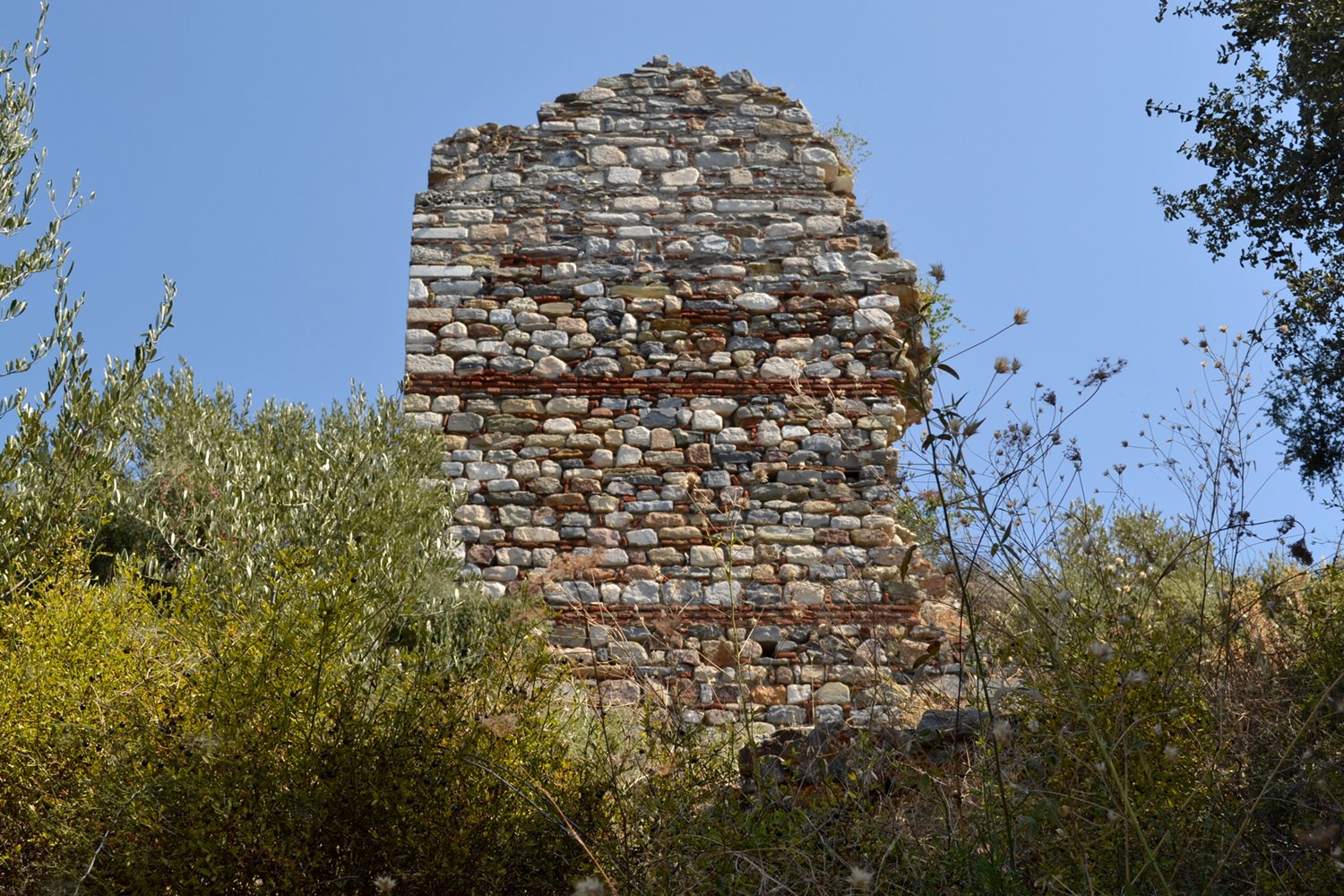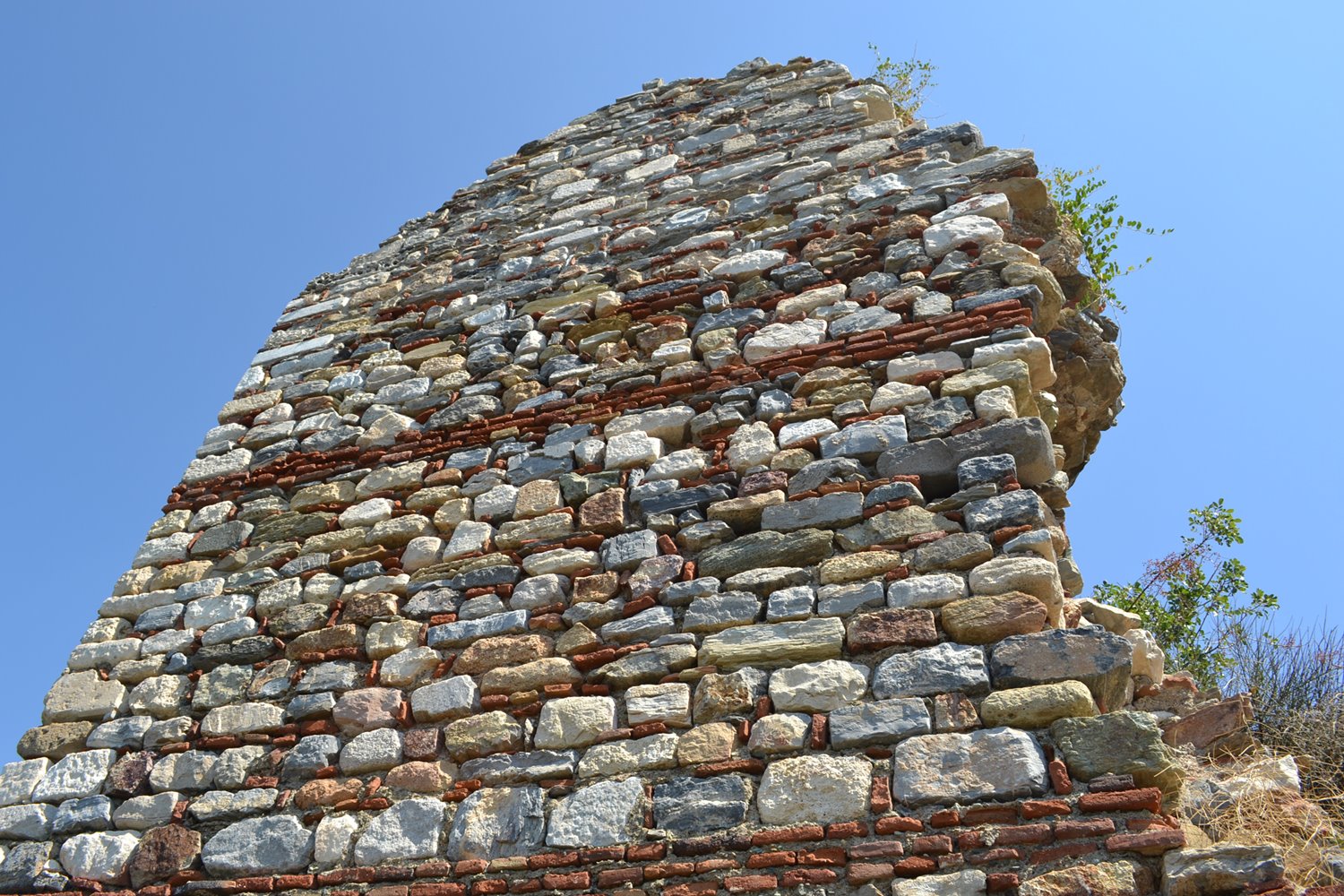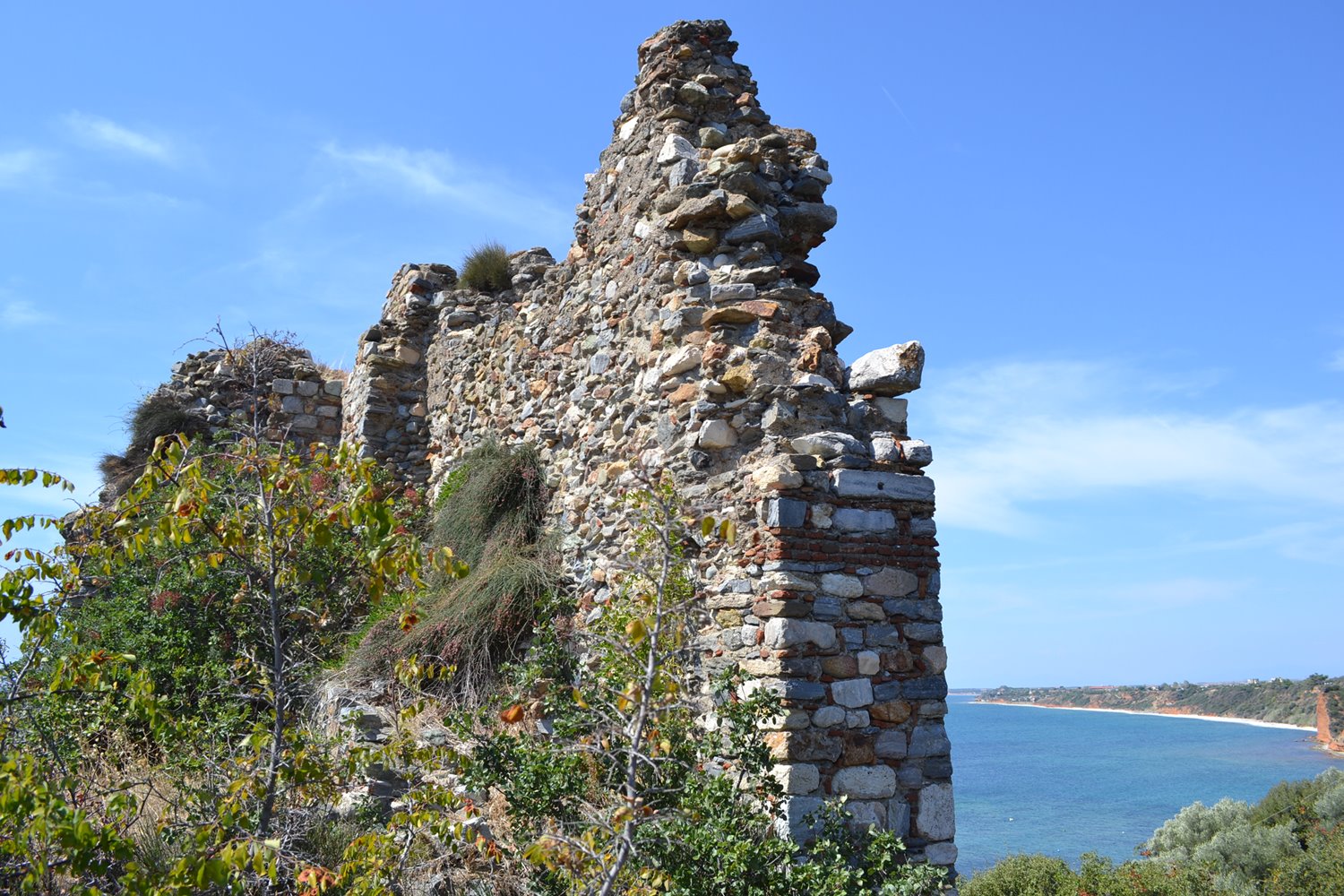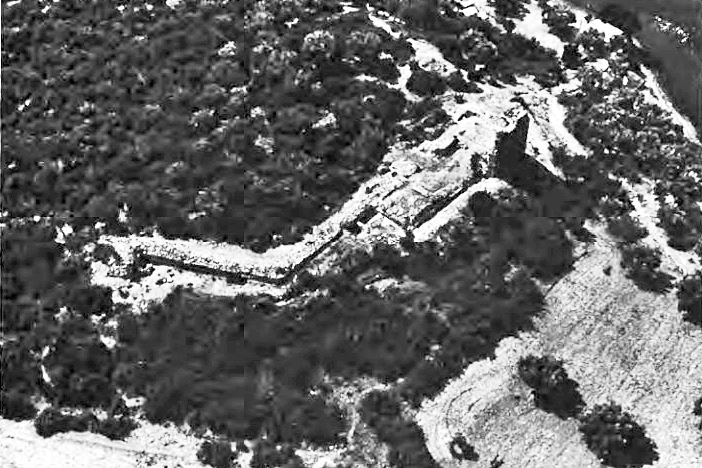Maronia, Maroneia-Sapes, Rhodope,East Macedonia & Thrace
Fortification of Maronia
| Location: |
| Above the port of Maronia at the southeastern coast of Rodopi region in Thrace |
| Region > Prefecture: | 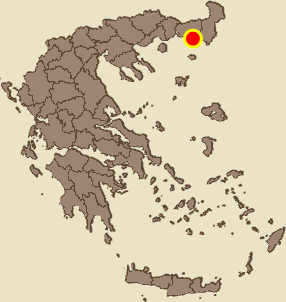 |
| East Macedonia & Thrace Rhodope | |
| Municipality > Town: | |
| City of Maroneia-Sapes • Maronia | |
| Altitude: | |
| Elevation ≈ 25 m |
| Time of Construction | Origin | |
| Early Byzantine period | Early ΒΥΖΑΝΤΙΝΕ |
|
| Castle Type | Condition | |
| Ancient City |
In Ruins
|
Few remains of a Roman-Byzantine fortification at the port of Maronia (Agios Charalambos) at the southeastern coast of the Rodopi prefecture in Thrace, in North Greece.
The Byzantine city and fortification was limited to a small part of the ancient city, near the sea. From the remaining parts of the fortification stands out part of a tower. Roman or not, the fact is that the fortification was in use for many centuries after the Roman period, at least until the 13th century.
History
Human traces all the way back from the New Stone Ages are found in the area. We find written references to Maronia in Homer, Herodotus and Stravo.
In the 7th century it was inhabited by colonists from Chios. Its founder according to Homer was Maron, priest of Apollo. The city flourished during antiquity as well as during the early Christian times. Its residents started dealing with trade and the sea from a very early time in history.
During the Persian Wars, Maronia was subdued to the Persians. Later it took part in the 1st Athenian Allegiance, while the 4th century BC was its prime time.
In the Roman era, Maronia, which was favored by the Romans for a long time, had gone through great commercial and financial rise. It is also mentioned as one of the cities which the emperor Adrian visited.
The city became an Episcopal center in the 3rd century AD and promoted to Archdiocese in the 4th century. After the 6th century, it shrunk and was limited to the area near the sea and developed characteristics of a fortified city-castle.
In the 9th-10th century, Maronia followed the general trend of reorganization and rearrangement in the urban centers.
Maronia continued to be an important agricultural, commercial and industrial center, up until the first half of the 13th century. It is mentioned however in later Venetian maps and a Venetian document of the 15th century.
During the 17th-18th century, the pirate invasions forced the residents to retract from the seafront and to build their settlement 4 klm towards the inland, where the modern village of Maronia is located. This settlement is the only one characterized as “Traditional settlement” in Thrace.
| First entry in Kastrologos: | December 2015 |
|
|
| Access |
|---|
| Approach to the monument: |
| From the NR Alexandroupolis-Komotini, exit to Maronia. We pass the modern Maronia and after 4km we reach the little port where the Byzantine ruins are. |
| Entrance: |
| Free access |
| Other castles around |
|---|
| Tower at Mesimvria |
| Acropolis of Petrota |



